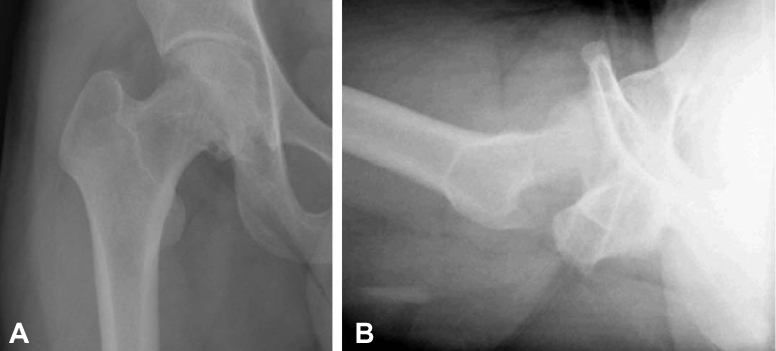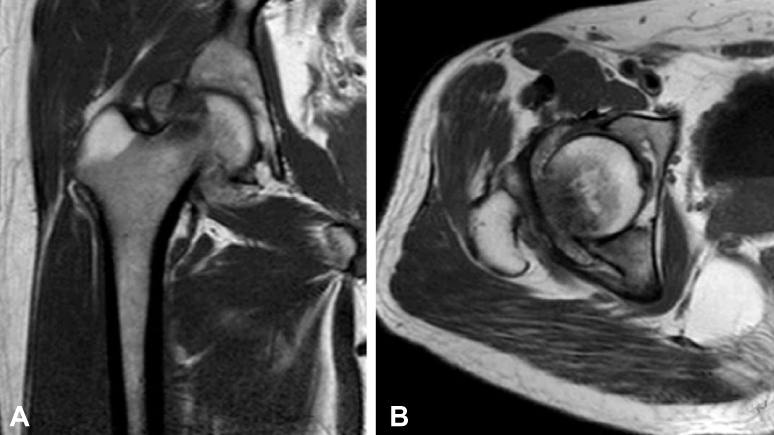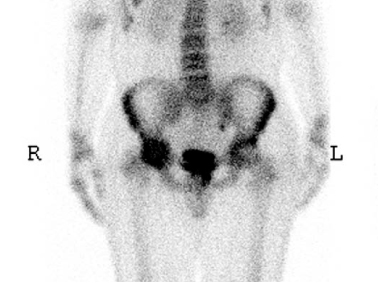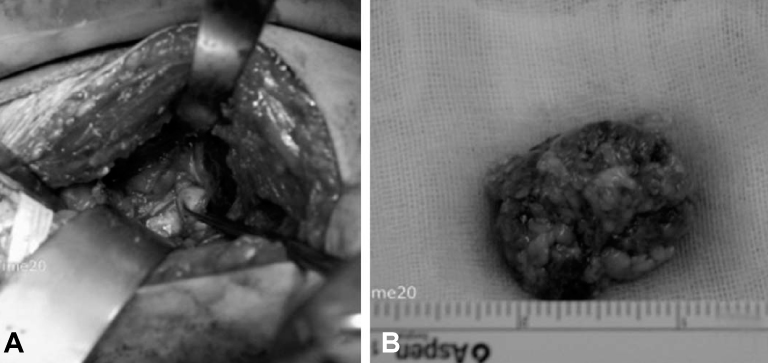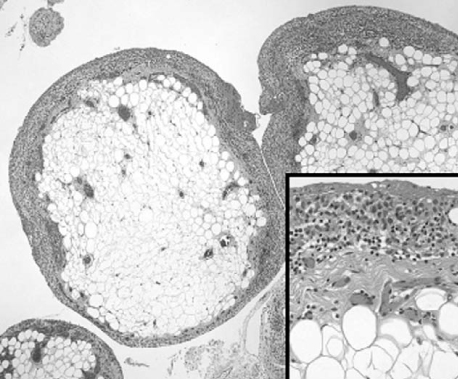J Korean Hip Soc.
2011 Mar;23(1):83-87. 10.5371/jkhs.2011.23.1.83.
Lipoma Arborescens in the Hip Joint: A Case Report
- Affiliations
-
- 1Department of Orthopaedic Surgery, Myongji Hospital, College of Medicine, Kwandong University, Goyang, Korea. wonnypia@hanmail.net
- KMID: 2190781
- DOI: http://doi.org/10.5371/jkhs.2011.23.1.83
Abstract
- Lipoma arborescens is a very rare disease in which adipocytes form a synovial villous lipoma. In addition, it has the potential for dysplastic proliferation. Hypertrophic synovial lipoma is stimulated by movement of joints, which results in joint pain, effusion, limitation of joint movement and swelling. A definite cause has not yet been proven, but trauma, rheumatic arthritis, inflammation and degenerative change are believed to be possible causes. There have been reports of lipoma arborescens in several joints, including the knee joint and elbow joint. However, it is very rare to find this disease in hip joints. In fact, only one such case has been reported in Korea. We report here on a rare case of lipoma arborescens in the hip joint along with a review of the relevant literature.
Keyword
MeSH Terms
Figure
Reference
-
1. Bryan RS, Dahlin DC, Sullivan CR. Lipoma of tendon sheath. J Bone Joint Surg Am. 1956. 38-A:1275–1280.2. Edamitsu S, Mizuta H, Kubota K, Matsukawa A, Takagi K. Lipoma arborescens with hemarthrosis of the knee. A case report. Acta Orthop Scand. 1993. 64:601–602.
Article3. Armstrong SJ, Watt I. Lipoma arborescens of the knee. Br J Radiol. 1989. 62:178–180.
Article4. Hallel T, Lew S, Bansal M. Villous lipomatous proliferation of the synovial menbrane (lipoma arborescens). J Bone Joint Surg Am. 1988. 70:264–270.
Article5. Sheldon PJ, Forrester DM, Learch TJ. Imaging of intraarticular masses. Radiographics. 2005. 25:105–119.
Article6. Learch TJ, Braaton M. Lipoma arborescens: high-resolusion ultrasonographic findings. J Ultrasound Med. 2000. 19:385–389.7. Kloen P, Keel SB, Chandler HP, Geiger RH, Zarins B, Rosenberg AE. Lipoma arborescens of the knee. J Bone Joint Surg Br. 1998. 80:298–301.
Article8. Martinez D, Millner PA, Coral A, Newman RJ, Hardy GJ, Butt WP. Case report 745: Synovial lipoma arborescens. Skeletal Radiol. 1992. 21:393–395.9. Sola JB, Wright RW. Arthroscopic treatment for lipoma arborescens of the knee: a case report. J Bone Joint Surg Am. 1998. 80:99–103.
Article
- Full Text Links
- Actions
-
Cited
- CITED
-
- Close
- Share
- Similar articles
-
- Lipoma Arborescens of Hip Joint: A Case Report
- Lipoma Arborescens in the Knee Joint: A Case Report
- MRI Findings of Synovial Lipoma Arborescens of the Hip: A Case Report
- Arthroscopic Treatment of the Lipoma Arborescens in All Compartments of the Knee: A Case Report
- The Arthroscopic Treatment of Lipoma Arborescens of Knee: A Case Report

